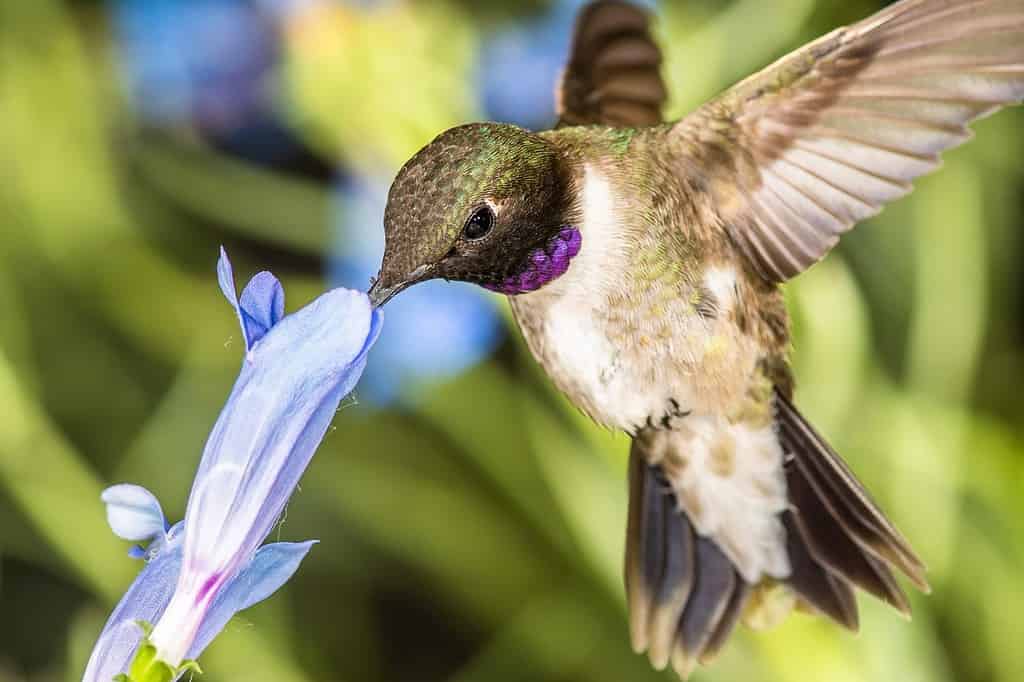Native Americans believe that hummingbirds are creatures that bring good luck, joy, and most of all, love. In Central America, it is said that hummingbirds bring love to any person that sees one. Hummingbirds are majestic creatures that migrate from place to place, just like any other bird. The migratory patterns coincide with the weather. When it comes to Oklahoma, hummingbirds tend to leave the state in September or October. They don’t come back for several months. but when do they return to Oklahoma? Let’s take a look at when hummingbirds return to Oklahoma. We’ll also explore the types of hummingbirds in the state and other fun facts.
When Do Hummingbirds Return?

Hummingbirds can flap their wings as much as 50 times per second.
©rck_953/Shutterstock.com
Hummingbirds return to the Sooner State at different times. This depends on the species of hummingbird and also the gender of the hummingbird. Males tend to return in March, whereas females usually come back around April. The majestic creatures come back to the state because of the state’s weather. It starts to warm up and these beautiful birds start yearning for that warmer weather.
In early autumn, that is when hummingbirds leave for other lands that provide them with warmer climates like California or the Baja region. Climate change, interestingly enough, has warmed the Earth and has made hummingbirds stay in some areas of the United States during winter.
Types of Hummingbirds in Oklahoma

Hummingbirds are creatures that are native to North and South America — found from as north as Alaska to as south as Tierra del Fuego.
©Steve Byland/ via Getty Images
The border between the United States and Mexico is rampant with hummingbirds because of its perfect weather during spring, summer, and autumn. Some states like Arizona have more than a dozen of hummingbirds flying about. Oklahoma is a little further north of Texas, so it doesn’t get as many species of hummingbirds. Two main species of hummingbirds gather in Oklahoma. And one passes through the state to other lands, making it a total of three species making the Sooner State home for several months of the year.
- Ruby-throated Hummingbird (Calypte anna): it is the only species found in the eastern part of Oklahoma and gathers between April and September or October.
- Black-chinned Hummingbird (Archilochus alexandri): most common to see between April and September or October.
- Rufous Hummingbird (Selasphorus rufus): they usually pass through the state so your best bet is seeing them in the summer months.
Conclusion

There are around 366 species of hummingbirds and they usually live between three to five years.
©Keneva Photography/Shutterstock.com
And there you have it, hummingbirds will return to Oklahoma in the springtime. Expect to see them around March or April. You’ll be able to continuously see them throughout the summer until September or October. In early autumn, that is when these majestic creatures will leave for other lands around the country or the world. If you have the opportunity to spot these beautiful birds in the Sooner State, try to get up close and personal and take pictures of them. Those photographs will be treasured forever.
The photo featured at the top of this post is © CarolinaBirdman/iStock via Getty Images
Thank you for reading! Have some feedback for us? Contact the AZ Animals editorial team.







